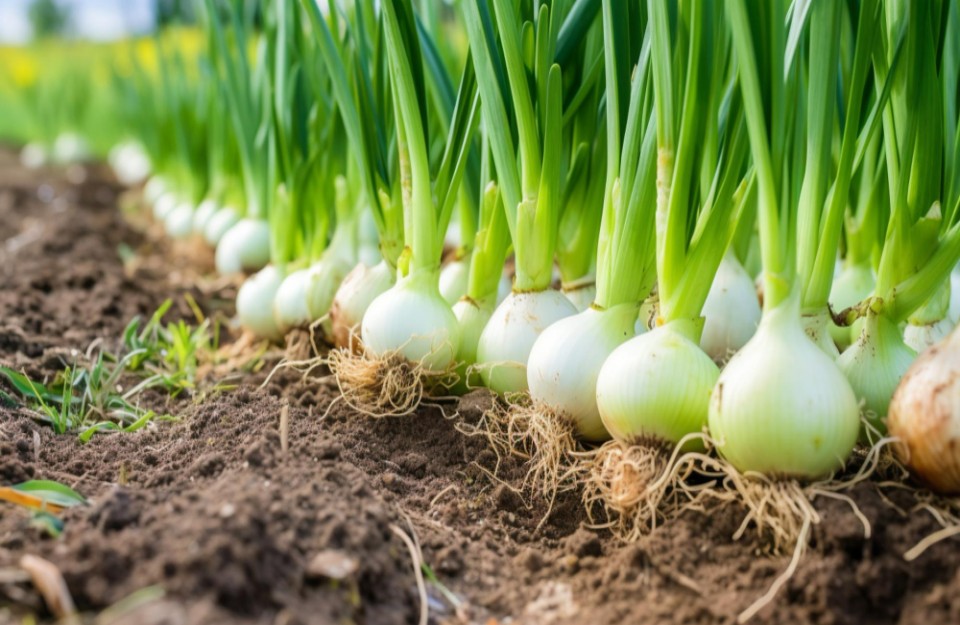
Onion serves as both a vegetable and a spice crop. Sulfur plays a critical role as a nutrient in onion cultivation. Farmers undertake onion cultivation extensively, with onion fields spanning over 17-18 lakh hectares annually. They grow onions in both the Rabi and Kharif seasons. Maharashtra leads in onion production. For many farmers, their livelihoods hinge on onion cultivation, with many earning substantial profits from onion sales. Onions are exported not only within the country but also to foreign markets.
Onion cultivation is possible in all types of soil. However, before planting, proper drainage in the field is necessary. Good yields of onion crops are achieved in loamy clay soil. Optimal growth of onions requires temperatures between 13-24˚C and 16-25˚C. The soil pH should range between 6.5-7.5. The average annual rainfall should be 650-750 mm. Fertilizers and manure can be utilized along with planting for onion cultivation.
Prior to planting onions, farmers should apply 25 kilograms of nitrogen, 40 kilograms of phosphorus, 40 kilograms of potassium, and 70 kilograms of organic manure per hectare in the fields. After 40 to 45 days of planting, distribute 75 kilograms of nitrogen, 40 kilograms of phosphorus, and 40 kilograms of potassium per hectare in the field. If farmers plant onions during the Rabi season, they can utilize 40 kilograms of phosphorus, 60 kilograms of potassium, 40 kilograms of nitrogen, and 75 kilograms of organic manure per hectare in the field before planting. Throughout the 40-45 day crop period, 40 kilograms of phosphorus, 60 kilograms of potassium, and 100 kilograms of nitrogen per hectare are necessary as fertilizer.
Sulfur is a crucial nutrient for achieving optimal onion yields and ensuring the quality of onion bulbs. During onion planting, farmers can apply 20-25 kilograms of sulfur per hectare in the field. For soils with low sulfur content, 30 kilograms of sulfur per hectare can be utilized. Moreover, for extended onion crop cycles, 45-50 kilograms of sulfur per hectare can be added to the soil.
The process of onion cultivation commences with the preparation of onion seed beds. Planting of onions is ideally conducted between June 1st and June 15th. After 40-45 days, the seedlings are transplanted into the fields. During this phase, the spacing between individual plants should be 6 inches, while the gap between rows should measure 2 feet. To enhance the yield, 10 tons of cow dung manure per hectare is applied. Effective pest management practices contribute to increased onion production.
Micronutrient Management: To address micronutrient deficiencies identified in soil tests, farmers should employ various fertilizers. For regions with zinc deficiency, ZnSO/ 10 kilograms per hectare can be utilized. In fields lacking boron, it is recommended to apply boron 20 percent fertilizer at a rate of 10 kilograms per hectare. Similarly, in areas with micronutrient deficiencies, 15 tons of FYM per hectare can be used.